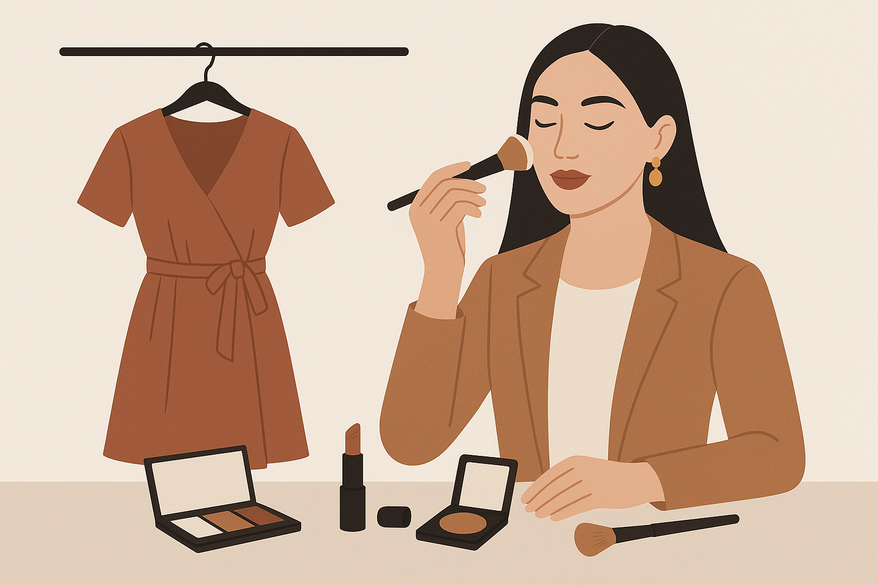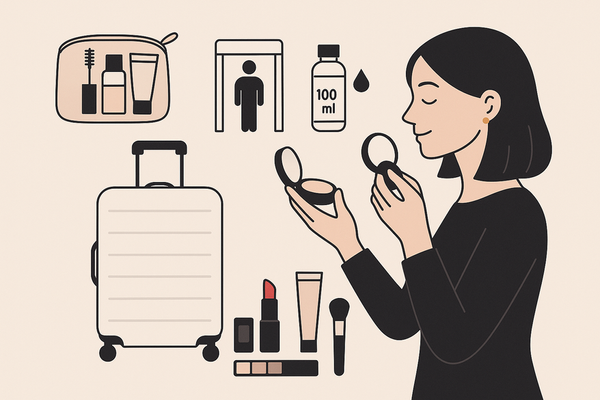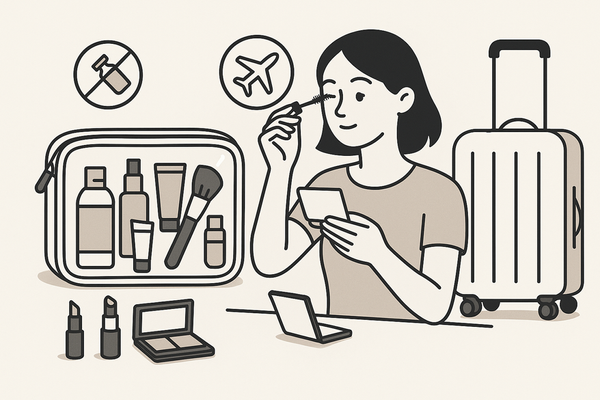Makeup and Wardrobe Styling Tips for a Polished, Cohesive Look
Master makeup and wardrobe styling tips to achieve a polished look. Learn how to coordinate cosmetics and clothing for a seamless aesthetic.

Estimated reading time: 7 minutes
Key Takeaways
- Coordinating makeup and wardrobe creates a seamless, polished style.
- Applying color theory ensures harmonious outfit and beauty pairings.
- Building a capsule wardrobe simplifies styling and enhances versatility.
- Step-by-step guides and AI tools can streamline your matching process.
Table of Contents
- Benefits of Combining Makeup and Wardrobe Styling
- Essential Makeup Tips for Perfect Pairing
- Wardrobe Styling Fundamentals to Complement Your Makeup
- How to Synchronize Your Makeup and Outfit
- Further Reading and Key Takeaways
- Master Your Makeup and Wardrobe Styling Tips
Benefits of Combining Makeup and Wardrobe Styling
Seamless visual statement – When your makeup echoes the tones and textures of your outfit, you tell one clear style story. As highlighted in QC Makeup Academy’s 4 Rules for Matching Makeup to Your Outfit, matching finishes and shades draws the eye in perfect harmony.
Boosted confidence and expression – A thoughtful color and design pairing lets you showcase personal flair. Inspired by the Style Fundamentals Guide, mirroring makeup and clothes instills empowerment and creativity.
Professional and social edge – A cohesive look stands out in meetings, events, or photographs. Being perceived as polished builds trust and ensures you’re memorable.
Essential Makeup Tips for Perfect Pairing
- Key daily routine
- Cleanser → moisturizer → primer → foundation → concealer → setting powder.
- Start with a clean, hydrated base; primer smooths skin and extends wear.
- Balance one bold feature (lips or eyes) with subtle complements to avoid overload.
- Matching makeup to wardrobe styles
- Choose one color palette per look and echo it in lips, eyes, or nails.
- Let prints take center stage with neutral eyes and nude lips on patterned outfits.
- Add pops of color that mirror accessories or jewelry on solid or muted pieces.
- Skin care and preparation
- Double cleanse to remove impurities.
- Apply hydrating serum and non-greasy moisturizer.
- Prime the T-zone to lock makeup in place all day.
- Use concealer under the eyes and blemishes, then blend foundation outward for even coverage.
- Blush and bronzer placement
- Bronzer: sweep under cheekbones, temples, and hairline for natural contour.
- Blush: apply to the apples of the cheeks and blend toward the temples to lift your face.
Wardrobe Styling Fundamentals to Complement Your Makeup
- Color, fabric, and pattern selection
- Warm undertones pair with oranges, reds, and golds; cool undertones thrive in blues, purples, and silvers.
- Day looks call for matte fabrics; evening welcomes satin or subtle shimmer.
- Solid colors let makeup focal points shine; small prints add texture without stealing the show.
- Building a versatile wardrobe
- Embrace the capsule wardrobe: 10–15 mix-and-match pieces.
- Invest in blazers, jeans, tailored pants, and classic dresses for endless outfit options.
- Seasonal and event-specific styling
- Spring/Summer: light fabrics, pastels, dewy foundation, peachy tones.
- Fall/Winter: rich textures like leather and wool, matte lips, deeper eye shadows.
- Professional events favor neutrals and soft makeup; festive occasions welcome shimmer and bolder hues.
How to Synchronize Your Makeup and Outfit
- Color theory in action
- Warm-based makeup (coral, warm browns) with warm-toned clothes (mustard, burnt orange).
- Cool-based makeup (taupe, plum) with cool outfits (navy, emerald).
- A simple color wheel can help you visualize complementary hues.
- Case study examples
- Floral spring dress → light pink gloss + neutral shadow + soft green liner.
- Little black dress → bold red lip + classic winged liner + minimal face makeup for timeless chic.
- Step-by-step coordination guide
- Lay out your outfit and note dominant colors and fabric finishes.
- Select a makeup palette that echoes outfit accents.
- Decide on a makeup focal point and keep other areas subtle.
- Photograph in natural light to check harmony.
- Add a highlighter that ties in metallic details from accessories.
To take the guesswork out of color matching, try Makeup Check AI, which suggests palettes based on your outfit.
Further Reading and Key Takeaways
- QC Makeup Academy’s 4 Rules for Matching Makeup to Your Outfit
- Let’s Get You’s Style Fundamentals Guide
- Anuschka Rees’s Beginner’s Style Guide
- Coordinated styling delivers a polished, confident appearance.
- Color theory and balanced focal points are key to harmonious looks.
- Capsule pieces simplify styling and maximize outfit options.
Master Your Makeup and Wardrobe Styling Tips
- Recap importance – A unified look boosts confidence and professionalism.
- Join the community – Share your experiences and questions to grow together.
FAQ
- How do I choose the right makeup palette for my outfit?
- Start by identifying your outfit’s dominant colors and then select makeup shades that either complement or subtly echo those tones. Using a color wheel can clarify complementary and analogous options.
- Can I wear bold makeup with printed clothing?
- Yes. Keep eye or lip makeup neutral when prints dominate, or choose one accent color from the pattern to highlight on lips or eyes for a cohesive effect.
- What are the benefits of a capsule wardrobe?
- A capsule wardrobe streamlines your choices with versatile pieces that mix effortlessly, making it simpler to coordinate outfits and matching makeup looks.
- How can AI tools enhance my styling process?
- AI-powered platforms like Makeup Check AI analyze your outfit and instantly suggest harmonious makeup palettes, removing guesswork and saving time.




